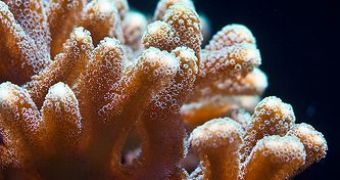An underwater robot that can follow marine organisms over record distances and can function in the ocean for months in a row, will allows scientists to study life in the open ocean.
The new robot, called the Tethys, carried out its first experiments last month, spending nearly one week at a time in California's Monterey Bay, tracking the algal blooms, including studies of a bloom of the toxic algae Pseudo-nitzschia australis.
It combines the speed of existing robots with the range of gliders, being able to pursue organisms on very long distances, while recording the chemical and physical properties of the water around them.
Jim Bellingham, chief technologist at the Monterey Bay Aquarium Research Institute (MBARI) in Moss Landing and the creator of this robot said that “this is a revolution in vehicles, [and] it changes how we do oceanography.”
Normally, oceanographers use several underwater vehicles for their research, none of which is actually the perfect one for studying marine life.
They have non-propelled vehicles, called gliders, that are able to stay in the ocean for long periods of time, and very good at studying its physical properties, but these robots are too slow and have far too limited sensors.
Oceanographers also use simple underwater robots, that are fast and have advanced sensors, but the problem is that they use their batteries within a day, thus limiting the amount of information gathered.
Bellingham said that the idea behind this new robot, was “to be able to develop 'life stories' of marine organisms by following them as they move through the ocean.”
And as the Tethys is only slightly more expensive than a glider ($140,000), individual labs should be able to buy it too.
It took MBARI scientists three and a half years to build the Tethys, because they wanted to overcome most of the problems that occur when tracking life in the ocean.
Bellingham explained that any terrestrial biologist studying a forest can return to it as many times as he/she wants, but in the ocean, the current changes everything constantly, so that even two days later, “instead of a forest, they're now looking at the Sahara Desert.”
The Tethys also allows oceanographers to carry out experiments from the shore, and reduce costs, because they can receive data from the robot and change its missions via satellite.
“To be at home at 2 a.m. and seeing the data coming in was pretty magical,” said Bellingham.
The researchers are still working on a way for the Tethys to bring back water samples and also want to add a small DNA analyzer to it, so that it can identify microorganisms.
MBARI researchers are also working on a second version of the robot, in an attempt to one day be able to deploy a team of vehicles that will track different organisms in the food web, simultaneously.
Bellingham hopes that in six months, he will be able to license the vehicle for commercial manufacture, Nature news reports.
He is now setting up collaborations with other scientists, and has already received funding from the National Science Foundation for a joint project that will study mixing of ocean waters.

 14 DAY TRIAL //
14 DAY TRIAL //